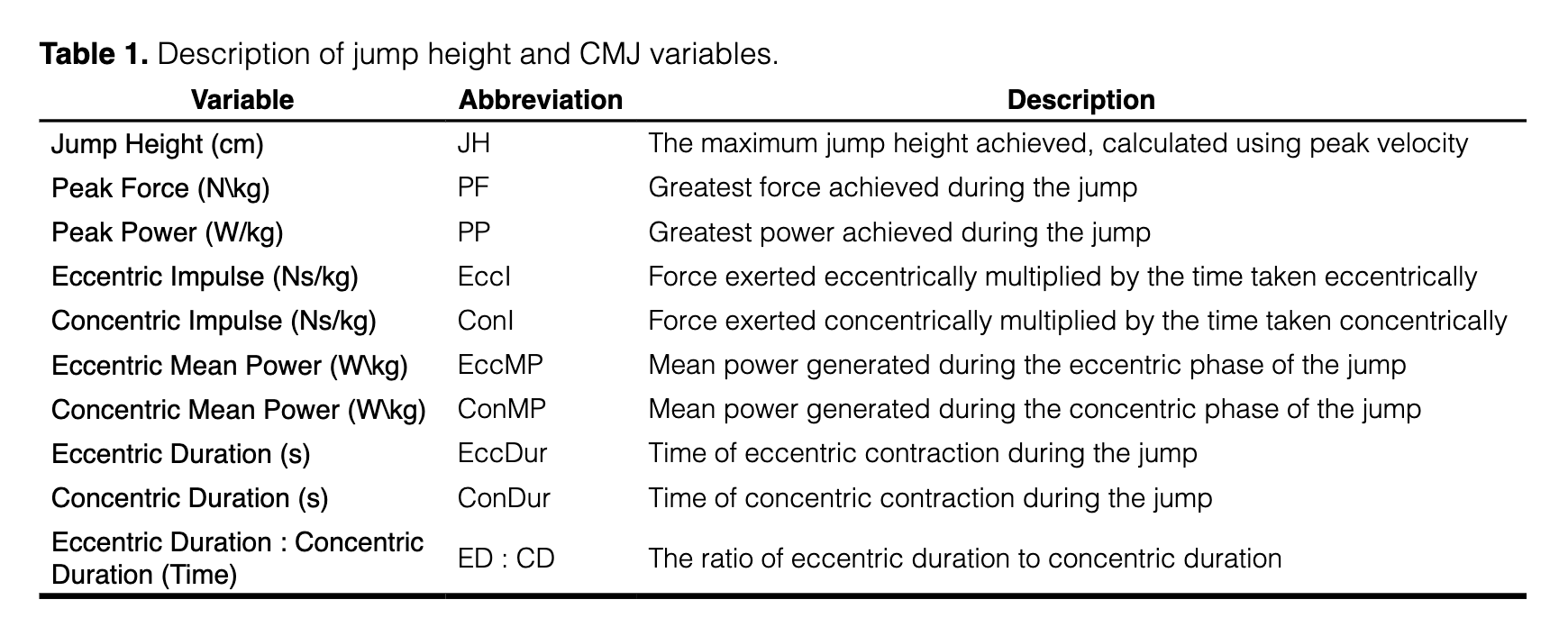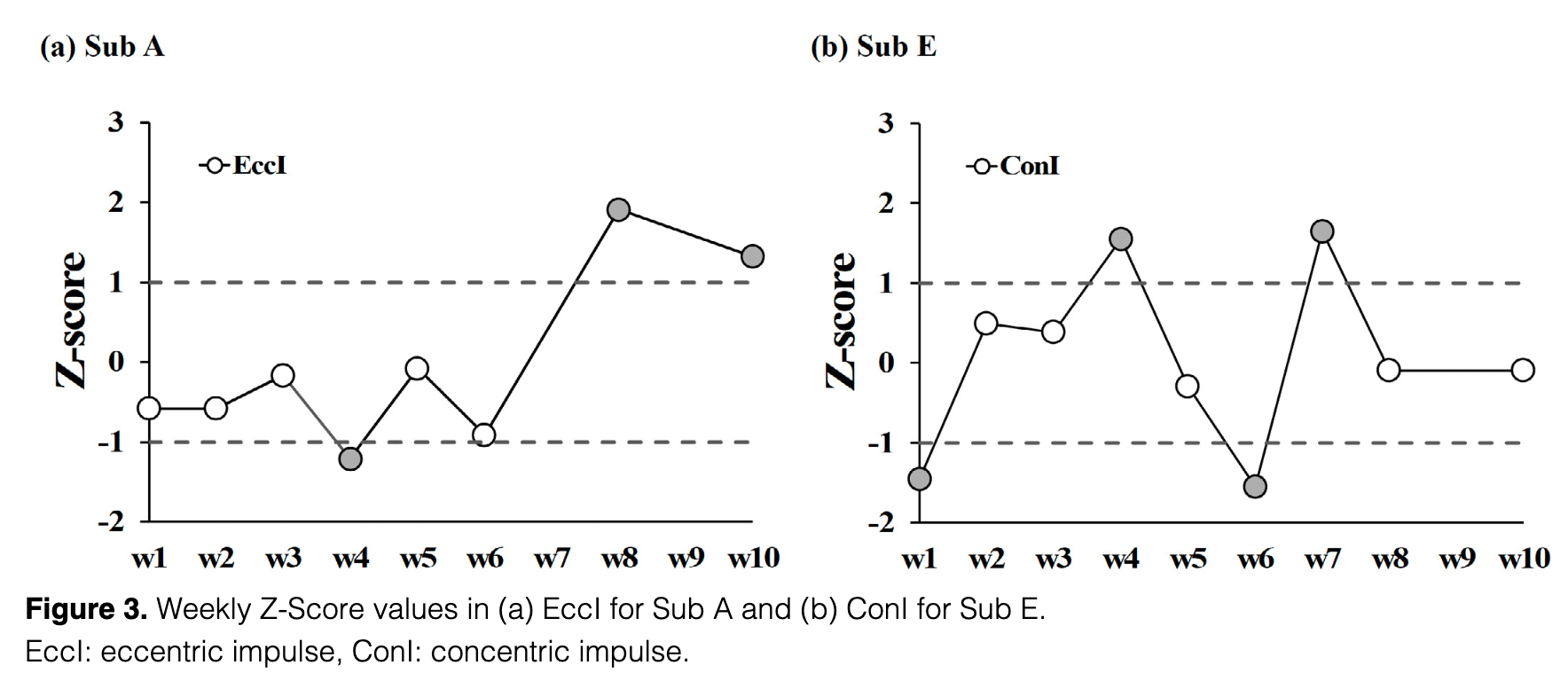The countermovement jump (CMJ) is a popular neuromuscular monitoring tool, but its long-term utility in sprinters hasn’t been clearly established.
A brand new study by Hasegawa et al. (2025) explored whether CMJ metrics could reliably reflect neuromuscular changes in sprinters over a 10-week training period.
This study highlights the value of looking beyond jump height alone and how metrics are not a one-size-fits-all for fatigue monitoring.
Let's dive in.
Can the CMJ force-time variables be used to monitor fatigue in high-level sprinters across a training block?
What Did the Researchers Do?
Design: Researchers conducted a 10-week longitudinal study involving weekly CMJ tests and quantification of training load.
Subjects: 5 elite male university sprinters in Japan.
- Events ranged from 100m to 400m hurdles.
- Notable accomplishments included national championship wins and selection for the World Championship.

Training Load: Calculated using weekly TRIMP (training impulse = session RPE × duration).
Wellness Scores: Collected weekly using a subjective 7-point scale (sleep, soreness, fatigue).
CMJ Testing: Weekly testing on force plates at the same time each week with 11 total CMJ variables tracked.

What Were the Results?
Force-Time Variables Beat Jump Height
- 4 of 5 sprinters showed strong negative correlations between weekly TRIMP and CMJ force-time metrics.
- Example: Eccentric impulse in Sub A (r = -0.814, p = 0.014) and concentric impulse in Sub E (r = -0.737, p = 0.024).
Jump Height Alone Was Inconsistent
- Only 2 athletes (Sub A and C) showed a correlation between jump height and training load.
Subjective Wellness Was Inconclusive
- Only one athlete (Sub A) showed a borderline correlation between wellness and TRIMP (r = -0.620, p = 0.056).
Individual Responses Varied
- CMJ variables that best reflected training load differed among athletes, likely due to the sprint event (100m vs. 400m), training velocity, and fatigue mechanisms.


What Does This Mean?
- CMJ testing is a practical and effective longitudinal monitoring tool, but not all metrics are created equal.
- Force-time variables (especially eccentric and concentric impulse and power) are more sensitive to training load than jump height alone.
- The “best” CMJ variable for one athlete might not be the best for another.
- Sole reliance on subjective wellness measures (e.g., sleep, soreness) may not provide a reliable insight into fatigue.
Limitations
- Small sample size (n=5), though deeply monitored.
- Data was occasionally missing due to travel and camps.
- CMJ was performed on Tuesdays; potentially not reflective of fatigue peaks following hard training days.
Coach’s Takeaway
- CMJ testing is a valid, low-impact method to monitor neuromuscular fatigue over time.
- Don’t rely on jump height alone as force-time metrics like concentric and eccentric impulse are more telling.
- Individualize your monitoring strategy. Start broad, then identify which CMJ variables correlate best with training load for each athlete.
I hope this helps,
Ramsey
Reference
Hasegawa, T., Muratomi, K., Furuhashi, Y., Mizushima, J., & Maemura, H. (2025). Monitoring Neuromuscular Function in Sprinters Using the Countermovement Jump: A Longitudinal Case Study. International Journal of Strength and Conditioning




